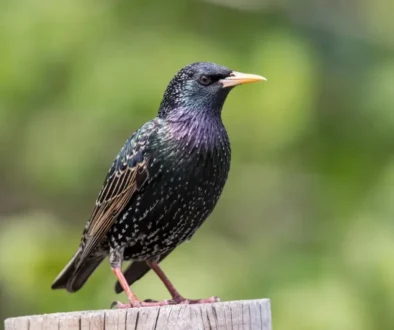Blue Jay (Cyanocitta cristata)
The Bold and Intelligent Forest Sentinel
The Blue Jay is a strikingly beautiful bird known for its vibrant blue plumage, loud calls, and complex social behavior. As one of the most recognizable birds in North America, the Blue Jay is often seen as the sentinel of the forest, alerting other wildlife to potential dangers with its distinctive calls.
Physical Characteristics
Blue Jays are medium-sized songbirds with a body length of about 9 to 12 inches and a wingspan of 13 to 17 inches. Their most distinctive feature is their bright blue feathers, which cover their head, back, and wings. The blue coloration is not due to pigments but rather to the unique structure of the feathers, which scatter light to create the blue appearance. Blue Jays also have a white face and underparts, with a black necklace-like band around their neck. The wings and tail are barred with black, blue, and white, adding to their striking appearance. They have a prominent crest on their head that can be raised or lowered depending on their mood, and a strong, black bill suited for cracking nuts and seeds.
Habitat and Range
Blue Jays are found across eastern and central North America, from southern Canada to the Gulf of Mexico. They prefer deciduous and mixed forests, particularly oak forests, but are also common in suburban areas, parks, and gardens. Blue Jays are highly adaptable and are often seen near bird feeders, where they can be aggressive in defending their food sources.
Diet and Foraging Behavior
Blue Jays have a diverse diet that includes seeds, nuts, fruits, insects, and occasionally small vertebrates like frogs or nestlings. They are particularly fond of acorns, which they collect and cache for later use. This behavior plays an important role in forest regeneration, as many of the acorns they bury are forgotten and eventually grow into oak trees. Blue Jays are also known for their intelligence and problem-solving abilities, often using tools or mimicking the calls of other birds to deceive or warn.
Breeding and Nesting
Blue Jays are monogamous and often form long-term pair bonds. The breeding season begins in late spring, with the female building a nest in the fork of a tree or bush. The nest is constructed from twigs, grass, and mud, and lined with softer materials like moss or feathers. The female typically lays 3 to 6 eggs, which she incubates for about 16 to 18 days. Both parents take part in feeding the chicks, which fledge at around 17 to 21 days old.
Vocalization and Communication
Blue Jays are highly vocal birds with a wide range of calls and songs. Their most common call is a loud, harsh “jay-jay,” used to warn other birds of predators. They are also excellent mimics and can imitate the calls of hawks, which they use to scare other birds away from food sources. Blue Jays are social birds and often travel in family groups or flocks, communicating constantly with one another through various calls and body language.
Cultural Significance and Conservation
The Blue Jay is a bird of great cultural significance, often seen as a symbol of intelligence, communication, and adaptability. Its bold and curious nature has made it a favorite among birdwatchers and a common subject in folklore and mythology. Despite facing threats from habitat loss and climate change, the Blue Jay’s adaptability has allowed it to thrive, and it is currently listed as a species of least concern.




